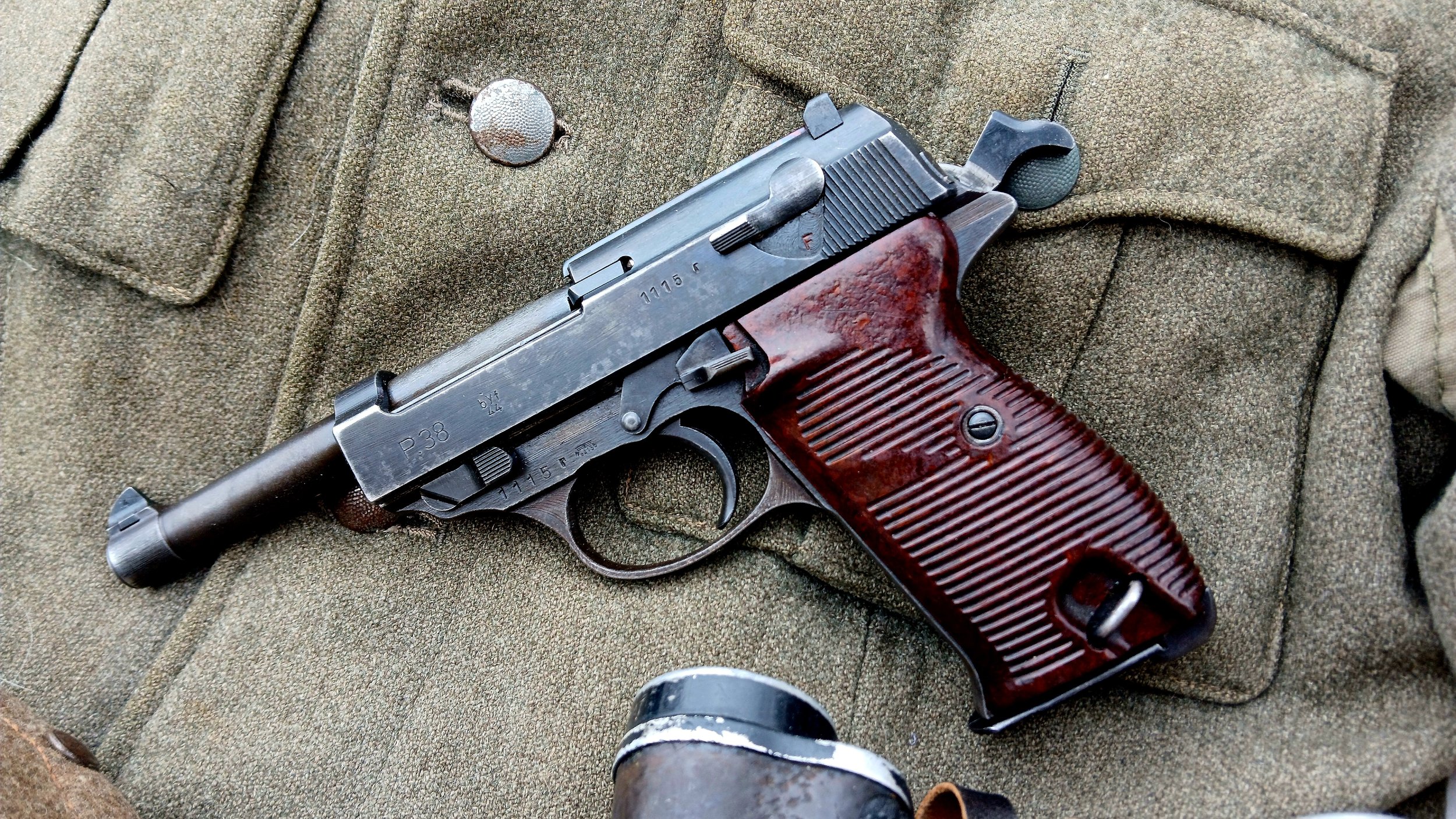
December, 2025
Walter P.38
German Reich
Second World War
Made by Mauser in 1944
9x19mm Parabellum
Categories
Lee Enfield RIC Carbine
Shortly after the turn of the 20th century, the British Royal Irish Constabulary adopted a new carbine for its constables, built from older MkI Lee Enfield and Lee Metford Carbines with some modifications. These would serve through the Easter Rising of 1916, as well as the subsequent Irish War of Independence that would see the end of British rule in most of Ireland, and the dissolution of the RIC itself in 1922.
Lebel M1886
The first smokeless powder rifle would put represent the most significant advance in small arms technology since the advent of gunpowder itself, but the rifle itself would be rapidly rendered obsolete, despite serving on for more than half a century.
British Victory Revolver
With the onset of the Second World War the British found themselves short of handguns, and just as they had in the Great War they looked across the Atlantic for a solution. They found the popular Smith & Wesson Military and Police Model, and promptly placed an order for a large number in their .38/200 cartridge.
Carcano Moschetto M1891
The cavalry carbine model of Italy’s Carcano is perhaps the most iconic of the series, having seen use by specialists such as the Arditi in the First World War as well as the Folgore paratroopers in the Second among many others.
Mosin Nagant M38
The Soviet M38 was intended for issue to specialists and non-combat troops, but its handy nature made it a popular choice in the brutal urban combat that came to characterize the popular image of the Second World War’s Eastern Front.
Vergueiro M1904/39
Faced with a decision between the Mauser and Mannlicher rifles to replace their black powder Kropatscheks, the Portuguese would instead choose a locally designed hybrid rifle for their forces.
Lee Enfield #4 Mk1
As the Second World War loomed, a need to update the venerable Lee Enfield rifle in British service saw the design modernized into the new #4 Rifle, with a series of improvements on the same core principals.
Radom Vis P.35
The excellent handgun adopted by Poland on the eve of the Second World War would go on to be one of the most common in German service during the conflict, seeing service on all fronts of the European Theater.
Type 44 Arisaka
The Japanese Type 44 Arisaka was a specialized variant of the Type 38 rifle intended for use by cavalry and other mounted troops, incorporating a folding bayonet.
Beretta M1934
The standard service pistol of Mussolini’s armies during the Second World War was a simple blowback automatic, and would serve on for decades in Italian service as well as helping to build the global brand of Beretta.
Ross MkIII
Canada’s first indigenously produced infantry rifle was a straight pull design made with match grade accuracy in mind. When brought to the conditions of the Great War’s Western Front its deficiencies in other areas became alarmingly apparent.
Ruby Mle.1915
A crude Spanish copy of the Colt Model 1903 became the most common French handgun of the Great War, seeing extensive service in that conflict. Despite its almost disposable nature the pistol would remain in service for decades beyond as well.
Mauser M1903
The most modern rifle in Ottoman inventory during the Great War was an example of the excellent Mauser 98, with some special features. These rifles would serve as a pattern during the interwar Turkish upgrade program, in addition to receiving minor modifications themselves.
Walther PP - Late War
The slightly larger forerunner to the famous Walther PPK, the Polizei Pistole was used by German police and military officers during the Second World War. Remaining in production until the capture of the Walther factory in May of 1945, several were captured by US troops at that time.
Mauser Model 1889/36
Despite adopting a new Mauser 98 pattern rifle, as the Second World War loomed Belgium also undertook a program to upgrade existing stocks of the older Model 1889 rifles to the same pattern.
Mannlicher M.1895
The straight-pull Mannlicher M.95 was the standard issue service rifle of the Austro-Hungarian Empire during the Great War, with millions produced and serving on the Eastern Front and in northern Italy, as well as other Fronts. It would continue in service to the the Empire’s successor states through the Second World War.
Included at the end of each posting is a reference to the rarity and average price observed by the author. This is, or course, subjective, and results may vary depending on a variety of factors, including condition, certain markings, etc., while rarity may vary depending on time and location.
Rarity is marked on a scale as follows:
Production (currently produced)
Surplus (Currently available on the surplus market)
Common
Uncommon
Rare
Very Rare



















